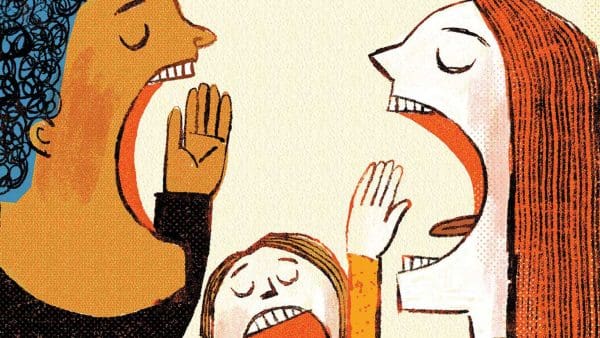
Political scientist Daniel Schlozman says our nation’s two political parties today are paralyzed by a combination of frenzied activity yet incapacity to bring together diverse interests in a common project; seemingly strong from the outside, but empty inside.
“All we see out there is bitter partisan division, and formal parties and paraparty groups around them engaged in all sorts of activity, and yet parties can’t seem to organize themselves into presences that are able to organize all of that political conflict,” says Schlozman, the Joseph and Bertha Bernstein Associate Professor and director of graduate studies in the Department of Political Science.
A deep dive into history
Schlozman’s new book, The Hollow Parties: The Many Pasts and Disordered Present of American Party Politics, co-authored with Sam Rosenfeld, an associate professor of political science at Colgate University in New York, is not an indictment of the two-party system. Rather, it is a deep dive into the histories of the parties; their triumphs and shortcomings, various stages of evolution, growth, and stagnation; and what the authors view as a path forward.
“As a civic presence in an era of nationalized politics, hollow parties are unrooted in communities and unfelt in ordinary people’s day-to-day lives,” the authors write. “Organizationally, they tilt toward national entities at the expense of state and local ones. Swarming networks of unattached paraparty groups, devoid of popular accountability, overshadow formal party organizations at all levels.” (Paraparty groups refer to nonprofits, think tanks, media companies, and fundraising groups.)
Schlozman, trained in political science, and Rosenfeld, trained in history, joined forces to cover topics including the rise of party politics in America, the early days of the Republican party, party responses to industrialism, the New Deal, and how the right “broke American party politics,” as well as the recent histories of both parties.

Strong parties
The chapter on the Republican Party’s founding from 1854 through 1877 showcases a strong party—a party that wins the Civil War, frees enslaved people, and passes the Reconstruction Amendments.
“This is a party that was in every way doing the hyper-political stuff we associate with 19th-century politics, but at the same time acted in service to a grand vision that reoriented and redeemed the promise of American democracy,” Schlozman says.
He also points to models for liberalism—times during which liberals looking to rejuvenate state Democratic Parties work in partnership with labor and civil rights—but notes that these examples are more specific and less overarching.
What is the path forward? Simply put, the authors suggest the parties emphasize civic engagement, connecting to people’s everyday lives, and connecting ordinary people to each other.
According to Schlozman and Rosenfeld, getting there will require “repeated and substantial electoral losses” to rebuke the extremist elements in the Republican Party, and for Democrats, building a big-tent party across many civic dimensions.
“The goal of the book was to try to capture all of that variety, but also to suggest that in that big fun mess are the answers to some of our democratic discontents,” Schlozman says. “There is something in there that may be of use to democracy.”




